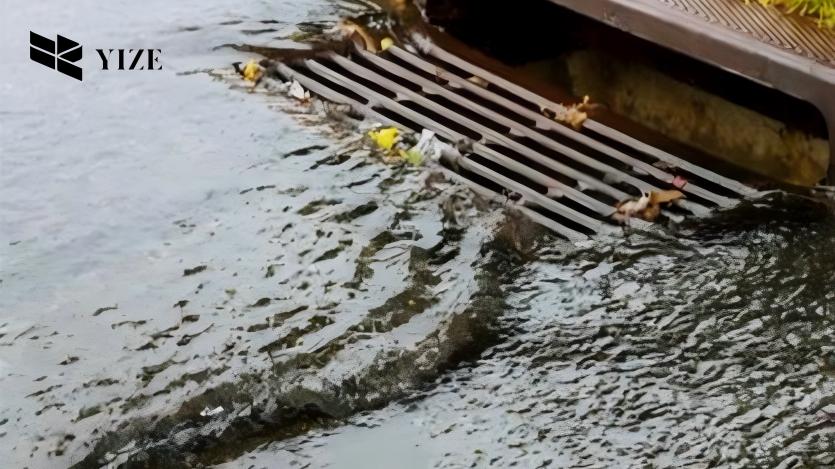
You must have a thorough understanding of your storm drain if you want to find the exact cause of your clogged storm drain. You can think of your home’s outdoor plumbing as your storm water drain. This drain collects rainwater and transports it to public sewage systems, lakes, ponds, etc. You can start to figure out what is clogging your storm water linear drain now that you know the basics about it. It is very important to take action before a storm to keep drains from getting clogged. It lessens the possibility of water damage as well. It’s easy for heavy rain, along with strong winds, to clog your storm channel drains, which can cause floods and damage from water. The issue of clogged storm drains is common in both rural and city areas.
It usually causes water to pool, streets to flood, and even damage to buildings. The goal of these storm drains is to quickly move water away from buildings and roads during heavy rains. But they can’t work right when they get clogged. There are several common factors that might cause these blockages. It includes both natural garbage, like dirt and leaves, and trash made by people, like plastic bags and litter. The first step to prevent storm drain clogs is to learn about the most common causes of storm drains getting clogged. It helps keep your area’s drains working well. This blog explains how to prevent your storm drains from clogging and what causes it.
I. Common Causes of Clogged Storm Drains and How to Prevent Them

Storm drains are an important part of city infrastructure because they keep floods from happening. This also controls the flow of rainfall during strong storms. But we don’t usually pay attention to these important parts of our homes until there’s a problem. When it comes to storm drain systems, clogging is a regular problem. When storm drains get clogged, they can cause many problems, from floods in one area to polluting the environment. This part will talk about the most common causes of why storm drains get blocked and what we can do to keep our drainage systems working well.
1. Debris and Garbage
The buildup of garbage and debris is one of the most typical causes why storm drains clog. People often throw away garbage like plastic bags, food wrappers, and cigarette ends in the streets and parking spots. These things end up getting into storm drains. Rains can also transport tree limbs, leaves, and other debris into storm water drains. It is causing the storm drains to become clogged.
Preventative measures
Cleaning storm channel drains and other places on a regular basis can help cut down on trash in cities. You should also put trash collectors in the storm water gutter. This can keep bigger pieces of trash from getting into the sewer system.
2. Tree roots
Roots from trees are a less common but important reason why storm water drains get clogged. Roots can get into lines through small holes or cracks while they look for nourishment and oxygen. They can shut off the water flow or even break plumping pipes when they get bigger, which will cost a lot to fix.
Preventative measures
Roots can get into your storm water gutter pipes, but regular inspection and repair can help find them early. When installing pipes, you should also choose the right products and methods. This can also help reduce the chance of root spread.
3. Animal debris
Storm water linear drains can get clogged with dead animals or animal debris. This can cause clogs and could be bad for your health. This is more common in areas that have a large number of different kinds of animals.
Preventative measures
It is possible to prevent the buildup of animal debris by doing regular checks of storm sewer inlets and cleaning them as necessary. When it comes to providing extra safety against animal debris, the installation of grates or screens might be helpful in specific cases.
4. Heavy rainfall and flooding
When it rains a lot or there are severe floods, storm water gutters can get clogged with water and trash. These things cause short-term storm channel drain clogs. This isn’t a long-term problem, but it can still cause floods and damage to property.
Preventative measures
The right size and maintenance of storm drain systems will help to lessen the effects of heavy rainfall. This is helpful in managing storms’ increased water flow. Cleaning and checking storm drains on a regular basis is also important to keep them working well.
5. Grease and oil
Grease and oil chemicals are usually caused by automobiles. These materials can build up in storm water drains after being washed off of streets and parking lots during rainy seasons. Oil and grease can form a thick coating that blocks water flow, and clogs storm drains over time.
Preventative measures
It is essential to get rid of used oil and grease the right way. You should only dump used oil in approved recycling centers and not in storm drains. Grease traps are also a good idea for businesses like restaurants that handle a lot of oil and grease. This prevents grease from getting into the sewer system.
II. FAQs
Q1: How do you prevent a storm drain from clogging?
You can easily and regularly avoid clogging your linear storm drain or catch basin. The first step is to regularly clean the grates by removing any garbage or dirt that you find. If you want to keep debris from falling into the drain, you should regularly clean the surrounding areas of the storm water gutter drain.
Q2: What is the difference between a storm drain and a manhole?
In most cases, you can see storm water drains along the side of the road. You can find sewer manhole covers installed in the exact center of the road.
Q3: Are sewers and storm drains the same?
Not! These two things are very different. They are two completely different systems. Your sanitary sewage system collects waste from toilets, sinks, shower drains, and washers. The storm drain collects rainwater from streets and roads and transports it to public sewage systems.
III. Conclusion
Clogged storm drains are a common problem in urban areas. This causes many issues, such as floods, water pollution, and damage to buildings. If the storm water linear drains on your home get clogged, it can be a messy and challenging problem. This is even more problematic when it is impossible to identify potential causes. The first step in preventing clogs from happening is to know what causes them. We can protect our neighborhoods and the environment by taking preventive measures.
You should also clean storm drains by picking up leaves, branches, and other debris from street sides. Also, it is very important to clean storm drains on a regular basis to keep them clear and avoid clogs. If you find your storm water drain overflowing or not draining properly. It is time to contact your plumber. A qualified plumber may help you with clogged storm drains. You also have the option of installing drains of high quality. You can get high-quality drains from Yzdrain. We provide you with a broad range of premium drain products.
